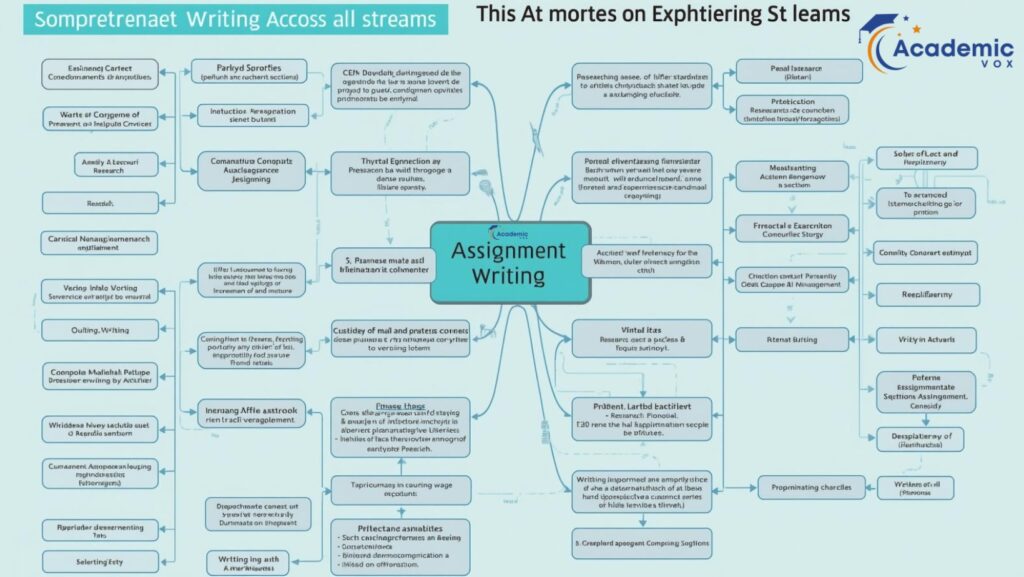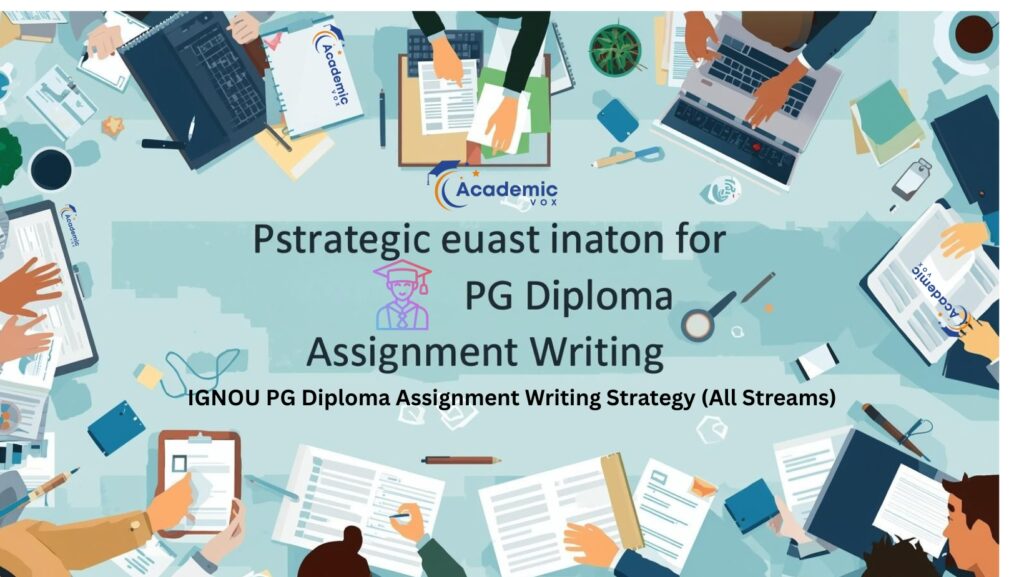IGNOU PG Diploma Assignment
Assignments are a part and parcel of the Indira Gandhi National Open University (IGNOU) assessment process. For PG Diploma students in various streams like Management, Education, Social Sciences, Commerce, and more, assignments hold considerable importance. They not only form a part of final scores but also assist in concepts getting fortified and writing skills.”.
In this article, we’ll explore a comprehensive, SEO-friendly, and practical writing strategy for IGNOU PG Diploma Assignments (All Streams) — covering everything from choosing questions, research techniques, formatting, structuring, presentation, and common mistakes to avoid.
Importance of IGNOU PG Diploma Assignments
Before diving into strategies, let’s understand why assignments matter so much in IGNOU:
Weightage: Assignments usually carry 30% weightage in the overall evaluation.
Eligibility for Exams: Assignment submission is required to sit for term-end examinations (TEE).
Concept Clarity: Assignment writing enables students to go through concepts again and use them in real-life situations.
Skill Development: Improves academic writing, referencing, and time management skills.
Step-by-Step Strategy for Writing IGNOU PG Diploma Assignments
- Understanding the Guidelines
Each set of assignments has certain guidelines. Students need to read carefully:
Word limit per question.
Language preference (primarily English/Hindi as per the course).
Submission deadline.
IGNOU’s formatting rules.

Tip: Never overlook the guidelines sheet accompanied with your question paper—it lays the foundation for high scores.
- Choosing Questions Wisely Attempt all mandatory questions according to the assignment booklet.
Elective questions (if available) are to be chosen based on: Your strength of the subject.
Study material/research availability.
Word count feasibility. - Research and Resource Collection
Good answers are born of good research. For IGNOU PG Diploma students, resources can be:
IGNOU Study Material (Self Learning Material – SLM)
IGNOU EGyankosh Digital Library
Reference Books from University Library
Genuine online journals (Google Scholar, JSTOR, ResearchGate)
Current reports, case studies, and examples pertinent to your stream
Tip: Always use genuine and academic sources, not random internet blogs.
- Framing Your Answer
A well-framed answer makes it more readable and impactful to examiners.
Ideal structure for IGNOU answers:
- Introduction – State the topic, provide background, and define what the answer will include.
- Body/Explanation – Explain main points, arguments, theories, and case studies in detail.
- Diagrams/Examples– Employ flowcharts, tables, or examples (wherever applicable).
- Conclusionm– Recap the key points and end with a thought.
Pro Tip: For PG Diploma level, responses should exceed textbooks and exhibit critical thinking.
- Adherence to Word Limit
Short answers:
~200–250 words.
Long answers/essays:
~500–700 words.
Exceeding the word limit is not a guarantee for higher marks. Adhere to the set length with clarity.
- Presentation & Formatting
Use A4 ruled sheets (for hand-written submissions).
Keep handwriting and spacing clean.Use black or blue pen throughout.
Include headings, subheadings, and bullet points for neatness.
Number pages and secure them appropriately before submission.
For written assignments (if permitted in some PG Diplomas):
Font: Times New Roman, 12 pt.
Spacing: 1.5 line spacing.
Correct margins.
- Referencing and Citations
Original work is appreciated by IGNOU. To prevent plagiarism:
Use APA/MLA citation styles (based on stream).
Provide correct references for books, journals, or web resources.
Add a short bibliography at the end.
- Time Management
Allocate equal time to each question.
Start early—don’t procrastinate until the last week of the deadline.
Reserve at least 3–4 days for revision and rewriting.
- Proofreading and Final Review
Before submission:
Verify grammar and spelling errors.
Check for clarity and logical flow.
Re-check page numberings and question order
Stream-Wise Assignment Writing Strategy
For Management (PGDIM, PGDHRM, PGDFM, etc.)
Apply real-life case studies and business models.
Emphasize frameworks such as SWOT, PESTLE, and Porter’s Five Forces.
Include recent corporate examples (e.g., MNCs, startups).
For Education (PGDHE, PGDET, etc.)
Focus on pedagogy models, teaching methodologies, and policies.
Quote NEP 2020 and UGC guidelines.
Include examples of classroom practice.
For Social Sciences (PGDUPDL, PGDSS, etc.)
Make use of sociological theories, government schemes, and current issues.
Quote census data, UN reports, and policy frameworks.
Offer critical analysis rather than rote learning.
For Commerce & Economics (PGDIBO, PGDFM, etc.)
Emphasize on statistics, graph, and recent financial statements.
Highlight RBI policies, surveys, and budget analysis.
Give problem-solving based responses.
For Health & Social Work (PGDHHM, PGDCOUN, PGDMH, etc.)
Give examples from hospitals, counseling, or NGOs.
Use WHO guidelines and Indian healthcare policies as references.
Keep writing empathetic and practical in tone.
Common Mistakes to Avoid
Plagiarizing directly from IGNOU guides or internet material.
Not paying attention to word limits and writing far too long answers.
Late submission of assignments.
Unclear handwriting or disorganized answer scripts.
Failure to include references and citations.
Submission Process & Tips
- Verify Deadlines: Assignments are submitted prior to the term-end exams.
- Submission Mode: Handwritten assignments are submitted at your study center. A few PG Diplomas permit online submission using Google Forms or the IGNOU website.
- Acknowledgement Slip: Always take and store it safely as evidence.
- Keep a Copy: Keep scanned or photocopies for future use.
Expert Hints to Achieve High in IGNOU PG Diploma Assignments
Write anything only in your own words (examiners check originality).
Make use of diagrams, flowcharts, and tables to stand apart.
Connect answers with practical examples.
Recheck study material carefully before writing.
Remain current with current affairs and policies affecting your sphere.
Final Thoughts
IGNOU PG Diploma assignments are not merely ceremonial—they are a valuable learning and marking instrument that crafts professional competencies. By adhering to the proper strategies—receptive reading of guidelines, organizing answers, time management, and presenting work neatly—candidates can secure maximum marks and consolidate subject expertise.
Should you be planning for IGNOU PG Diploma Assignments 2025, begin early, remain regular, and treat assignments as an exercise in learning instead of a chore.

